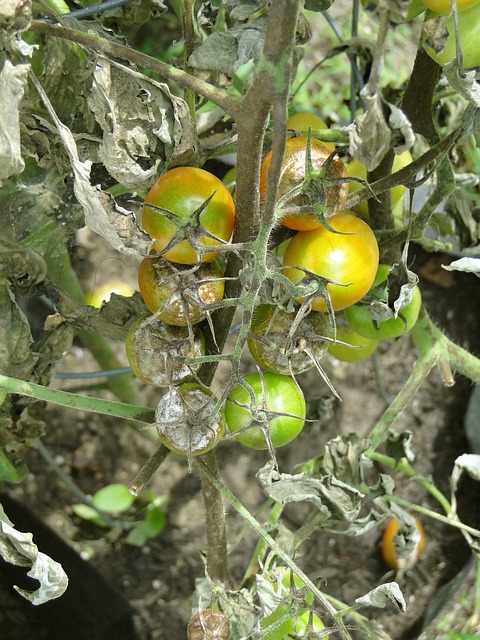
I find it incredible that my garden can handle such intense weather variations. One week it’s boiling outside, the next the temperature drops to a balmy 10 degrees celsius overnight. I’m grateful for the respite from the heat, but cooler, wet weather brings along a whole other set of problems, including tomato blight.
What is tomato blight?
Blight actually refers to a collection of fungal diseases that affect most nightshade plants (e.g., potatoes, tomatoes, eggplants, and peppers). The condition advances rapidly, turning leaves brown and leaving your plant looking like it’s on its last legs. Blight can also affect the main stem of your plant and, in advanced stages, can even affect the fruit.
What causes blight?
There’s a downside to cool weather, especially if the air is humid rather than dry. Plant diseases — fungi and bacteria — love damp, moist conditions.
Measures to avoid blight
Prevention is the best cure for any type of garden disease. To stop this fungal infection from spreading among your nightshades do the following:
- Practice proper crop rotation. If blight hits your plants this year, planting them in the same location will lead to a predictable outcome.
- Avoid watering plant foliage. Don’t get the leaves of your plant wet. Water from below, instead.
- Allow for adequate air circulation. Space the plants appropriately and prune as needed to ensure your plants aren’t squished together. Better airflow ensures that even after heavy rainfall, your plants won’t stay humid and moist.
- Keep leaves off the ground. Trim and prune the bottom leaves of your tomato plants. If they fall onto the soil, they’re more likely come into contact with a fungal infection.
- Use supports. Letting your tomato plants sprawl is the lazy gardener’s way, but it’s also an ideal way for your plants to contract blight. Use stakes or tomato cages to keep your plants off the ground.
What happens if my plants are already affected?
Trim off diseased portions of your plants. If the disease has spread too much and your plant is too far gone, remove it from your garden. Do not toss it into the compost pile.
Fungicides are another option. I suggest opting for organic products. This solution is best when blight is caught early. Avoid relying on chemicals to solve problems like these. They may work in the short term, but prevention is the best way to avoid long-term issues and spending money down the line.

Steph Coelho is a freelance writer gardening in zone 5b. She is a certified Square Foot Gardener and has taught various garden-related workshops. When she’s not digging in the dirt or writing, she’s cooking up fresh produce, running, or listening to her favorite podcasts.
Leave a Reply